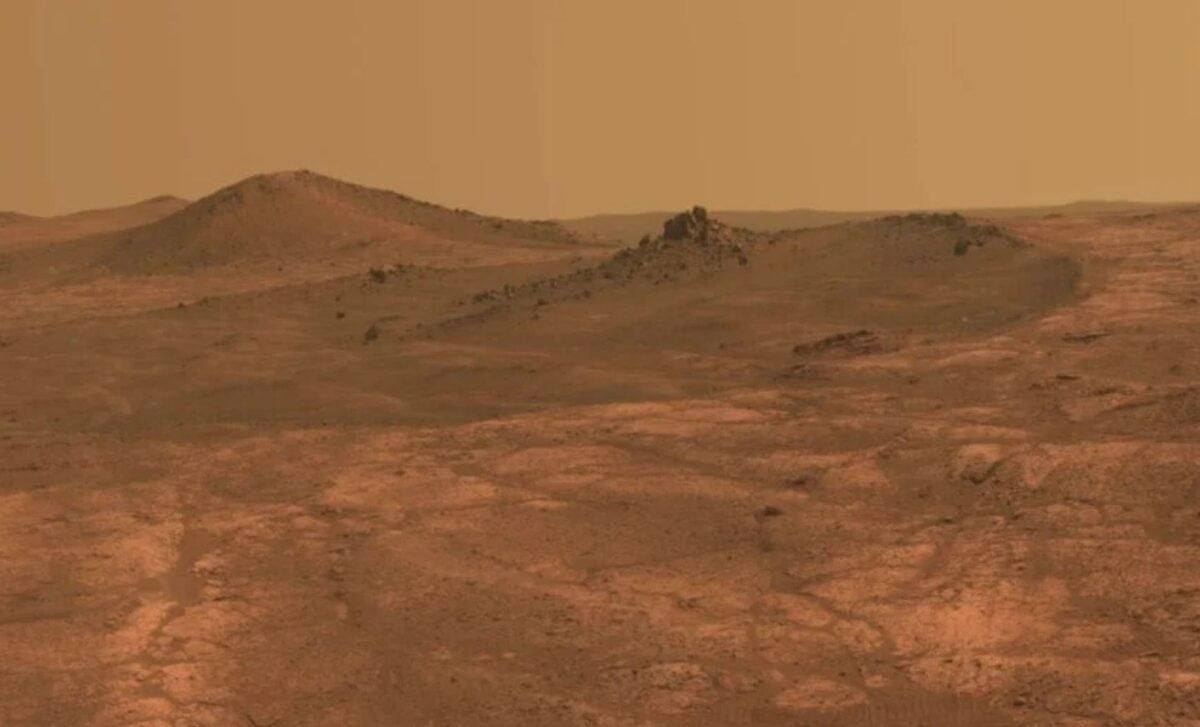NASA is preparing to send humans to Mars by the 2030s, aiming to unlock the planet’s geological secrets and investigate whether life ever existed there. Building on the success of the Artemis program, which focuses on lunar exploration, this ambitious mission will allow astronauts to conduct in-depth geological and biological research, searching for signs of ancient life in areas once rich with liquid water. This mission could not only revolutionize our understanding of Mars but also serve as a stepping stone toward interplanetary colonization.
Unlocking Mars’ Secrets: NASA Aims for Human Exploration in the 2030s

NASA has set an ambitious goal to send humans to Mars by the early 2030s as part of a long-term mission to answer fundamental scientific questions about the geology, climate, and history of the red planet.
This mission would represent a pivotal moment in space exploration, building upon decades of robotic exploration that has laid the groundwork for human presence on Mars. The Artemis program, which aims to return humans to the Moon by the mid-2020s, serves as a critical stepping stone, preparing astronauts for the unique challenges of long-duration missions to Mars. NASA's motivation is clear: the potential for groundbreaking discoveries, including whether life—either past or present—ever existed on Mars.
Uncovering Mars’ Ancient Geological History
The surface of Mars offers tantalizing clues about the planet’s ancient past, with landscapes that suggest Mars was once home to abundant liquid water. Approximately 3.8 billion years ago, Mars likely had a climate that could support lakes, rivers, and possibly oceans. Today, however, the planet is cold and dry, with water mostly locked away as ice at its poles or hidden beneath its surface. Understanding how Mars lost its water and its once-thick atmosphere is crucial to piecing together the story of the planet’s evolution. NASA’s human mission to Mars seeks to answer these questions by allowing astronauts to conduct in-depth geological fieldwork, something robotic missions can only achieve to a limited extent.
The planet’s geology is as diverse as it is mysterious. Mars hosts the largest volcano in the solar system, Olympus Mons, and features vast canyon systems like Valles Marineris. These massive geological formations tell a story of ancient volcanic activity and tectonic forces that shaped Mars’ surface. Yet many of these features are poorly understood. According to Joel S. Levine, an atmospheric scientist and former NASA researcher, “while robotic missions can provide valuable data, there are certain questions only a human mission can answer.” Studying these features up close could reveal critical information about Mars' geological history, including its volcanic and tectonic activity, and how these processes compare to those on Earth.
The Search for Life on Mars
One of the central goals of the upcoming mission is to search for evidence of past or present life on Mars. Billions of years ago, Earth and Mars were remarkably similar, both possessing liquid water and thick atmospheres. On Earth, these conditions led to the emergence of life, and scientists believe that the same could have been true for Mars. The question of whether microbial life existed or still exists beneath the Martian surface remains one of the biggest mysteries in planetary science.
Robotic missions like Perseverance have already begun exploring areas that might harbor biosignatures, especially ancient lakebeds and regions where water might have once flowed. However, humans are far better equipped to explore these regions in detail and make critical real-time decisions about where to search for signs of life. Astronauts could collect samples from Mars’ subsurface—an area thought to be more likely to contain evidence of life because it is less exposed to harmful radiation from the Sun. As NASA’s Artemis program prepares astronauts for living and working on Mars, the experience gained on the Moon—in terms of resource extraction and habitat building—will be essential for conducting long-term biological and geological research on Mars.
Preparing for the Journey to Mars
Sending humans to Mars involves overcoming enormous logistical and technological challenges. To tackle these, NASA has been developing the Space Launch System (SLS), a powerful rocket designed to carry heavy payloads, and the Orion spacecraft, which will transport astronauts on deep space missions. The Artemis program, currently focused on returning humans to the Moon, is crucial for testing these systems and preparing astronauts for the lengthy journey to Mars. The Artemis III mission, scheduled for 2026, will bring humans back to the lunar surface for the first time since the Apollo era. It will serve as a proving ground, where astronauts will practice living in isolated, harsh environments, which will mirror conditions on Mars.
The journey to Mars itself is expected to take around six to seven months, covering approximately 250 million miles each way, depending on planetary alignment. Once on Mars, astronauts will likely spend up to 500 days on the planet’s surface, conducting a wide range of scientific investigations. They will need to rely on resource extraction technologies to produce water, oxygen, and even fuel from subsurface ice deposits, ensuring their survival in Mars’ inhospitable environment. Learning how to live off the land will be critical not just for this mission but for the future of interplanetary exploration.
The Future of Interplanetary Exploration
NASA’s planned mission to Mars represents a giant leap in humanity’s journey to understand our solar system. By investigating Mars' ancient climate, geology, and potential habitability, scientists hope to gain insights into whether Mars ever supported life and what that could mean for the broader search for life beyond Earth.
The discoveries made by astronauts on Mars could lay the foundation for future missions, potentially leading to permanent human settlements on the red planet and beyond. This mission will not only expand our scientific understanding of Mars but also mark humanity’s first step toward interplanetary exploration.



